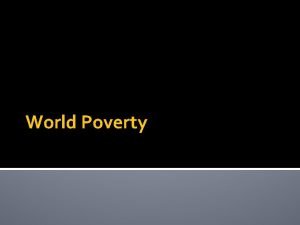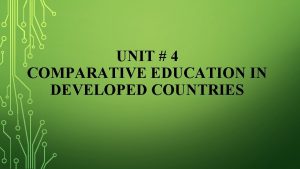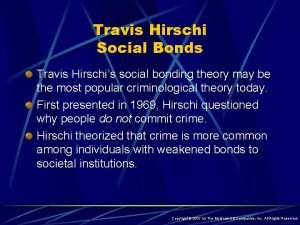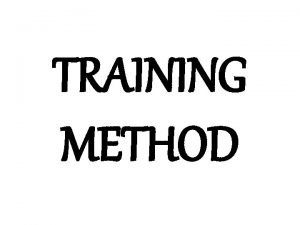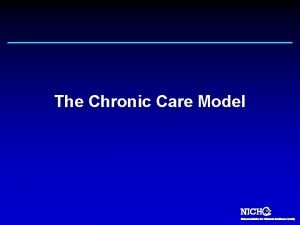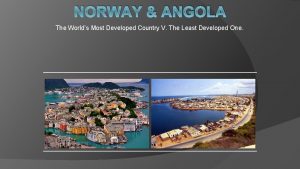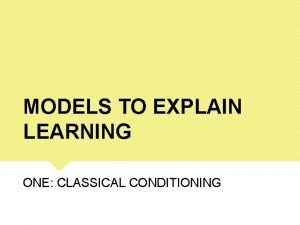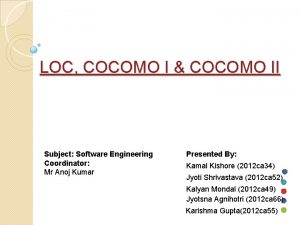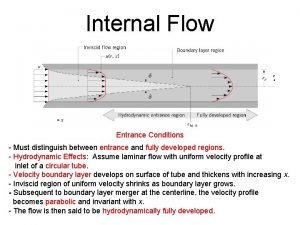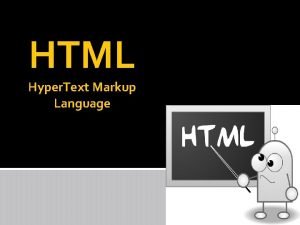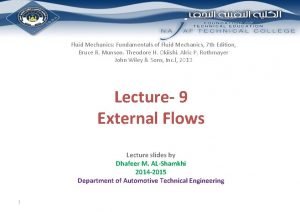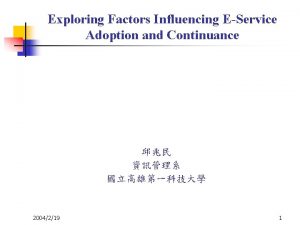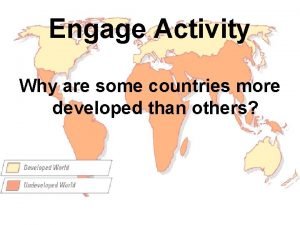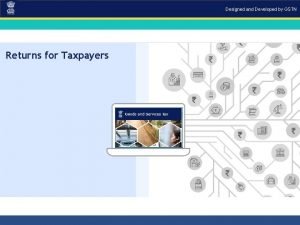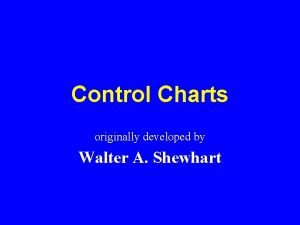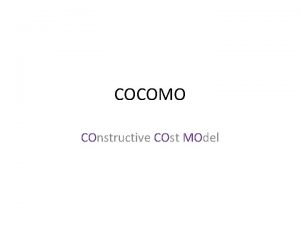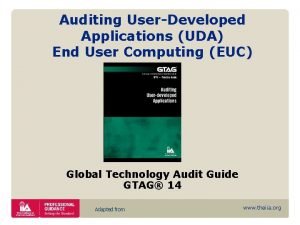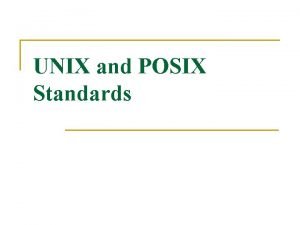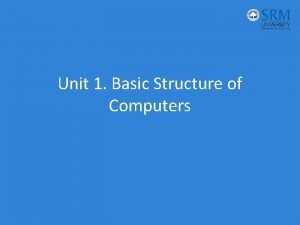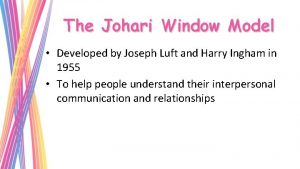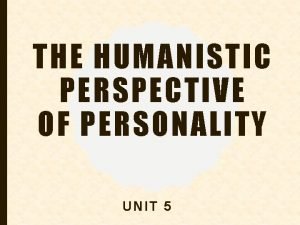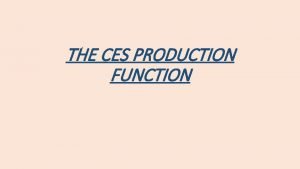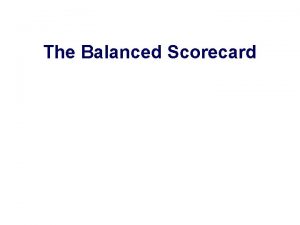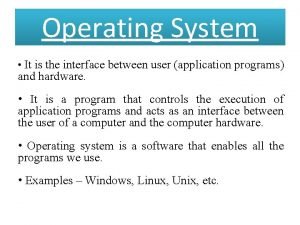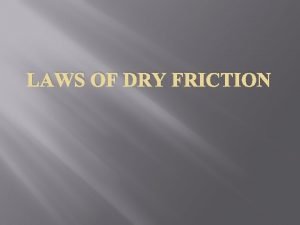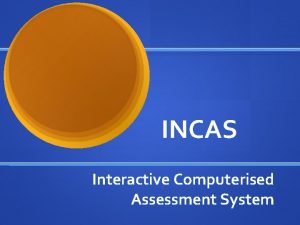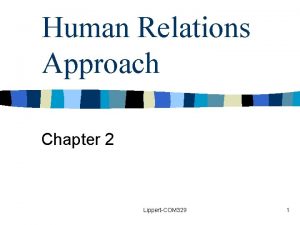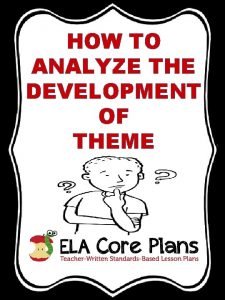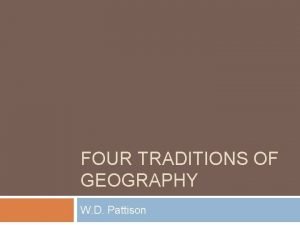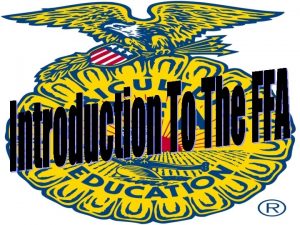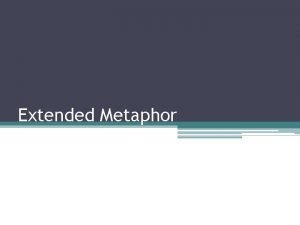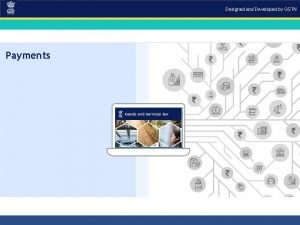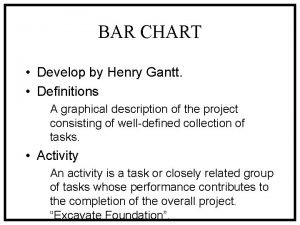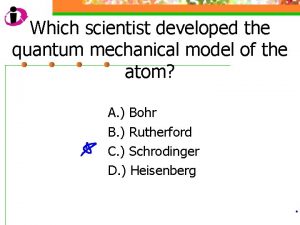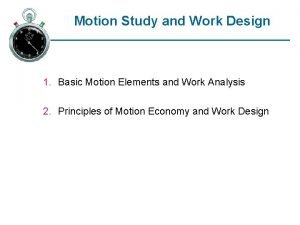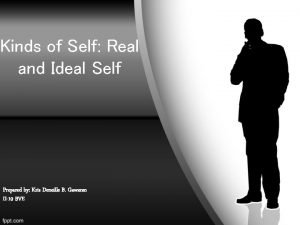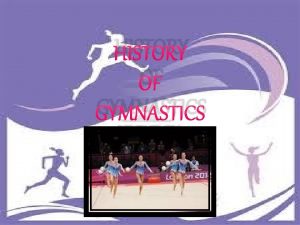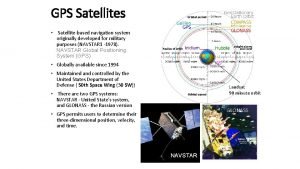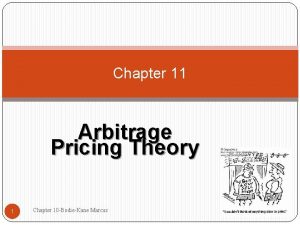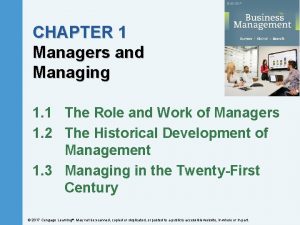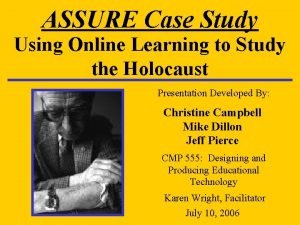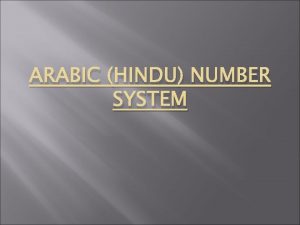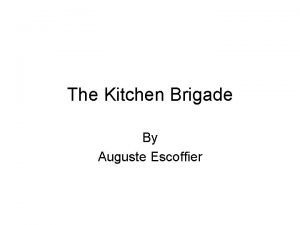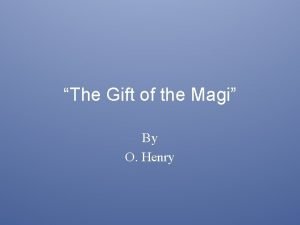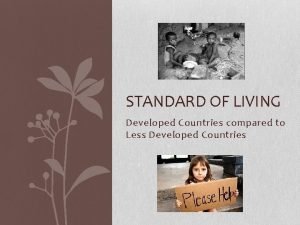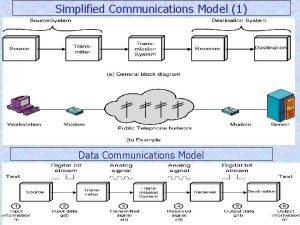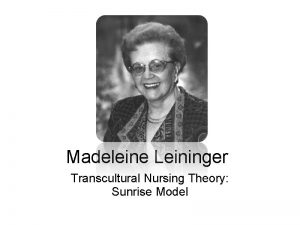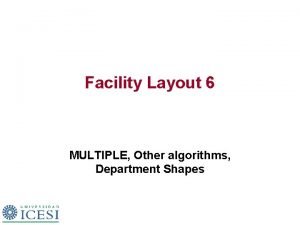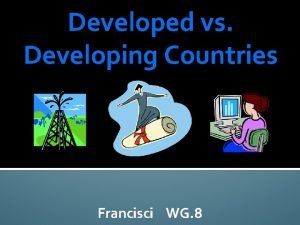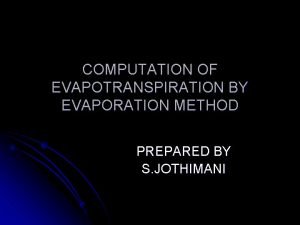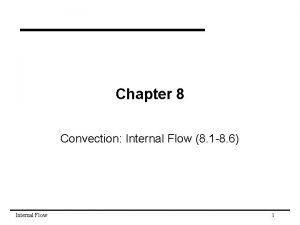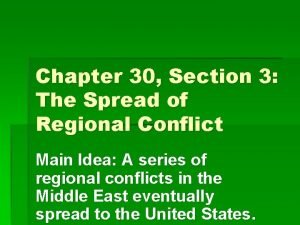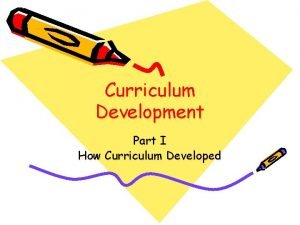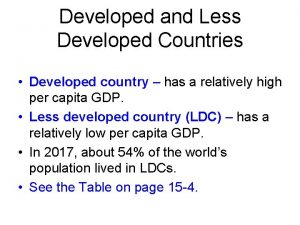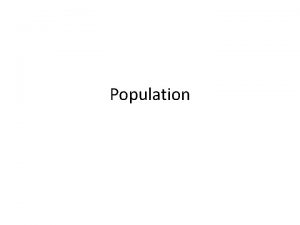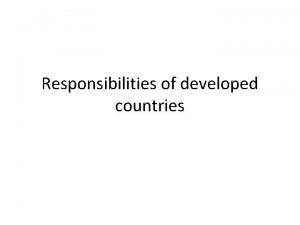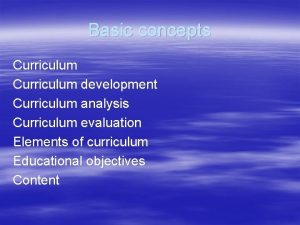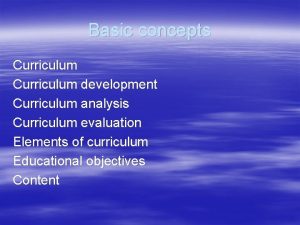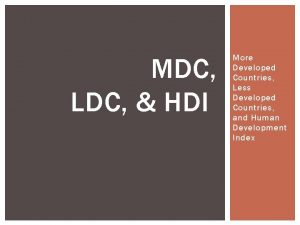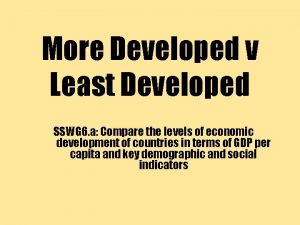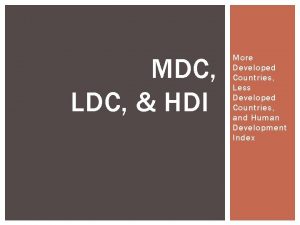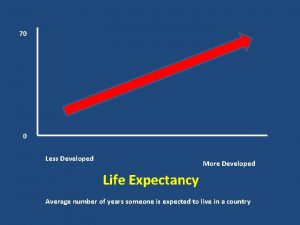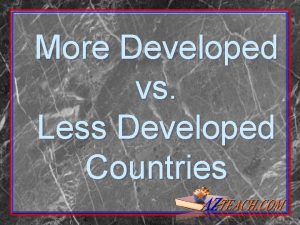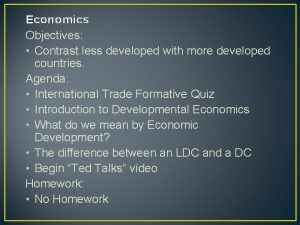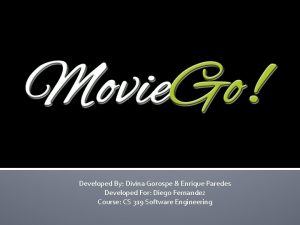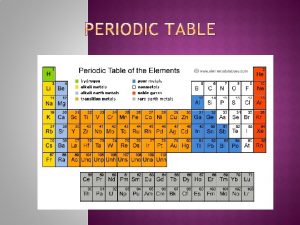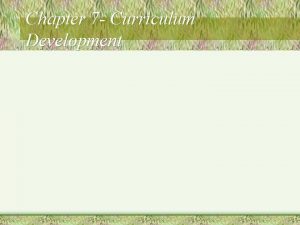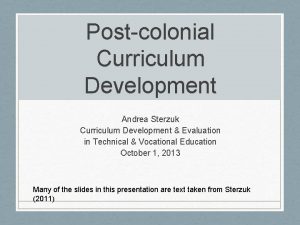Curriculum Development Part I How Curriculum Developed Curriculum






































































- Slides: 70

Curriculum Development Part I How Curriculum Developed

Curriculum always develops in relation to… • The nature of the subject matter • The nature of society • The nature of the individual – Understanding of what it means to be a human person

• The key point is the realization that the history of curriculum parallels the whole of human history • How at a given point in time, society reflected the understandings of what it means to be a human person and what subject matter counts to be this human person

Western Curriculum Development • The Greeks developed the Quadrivium: – – Arithmetic Geometry Astronomy Music

• The Romans developed the Trivium: – – Grammar Rhetoric Dialectic The Trivium and Quadrivium plus Philosophy and Theology (considered the Mother of all knowledge) become the Liberal Arts in the Middle Ages

Herbert Spencer (1820 - 1903) • Social Darwinist – Coined the phrase “survival of the fittest” – 1859 – “What Knowledge is of Most Worth? ” • The most central question to curriculum development • Along with…. • Why is this knowledge worthwhile? • How is this knowledge acquired or created?

In United States: • Committee of Ten 1893 – Determines the structure of secondary school curriculum by stating subjects and how much time to spend on each subject

First Secondary School Year • • Latin (5 periods a week) English Literature (2) English composition (2) German or French (5) Algebra (4) History of Italy, Spain and France (3) Applied Geography (European political-continental and oceanic flora and fauna) (4)

Fourth Secondary School Year • • • Latin (4) Greek (4) English Literature (2) English composition (2) English grammar (1) German (4) French (4) Trigonometry and higher algebra (2) Chemistry (4) History and civil government (3) Geology 4, first half year) Anatomy, physiology and hygiene (4 second half year)

Committee of Fifteen 1895 • Sets Primary School Curriculum • Determines 8 years of primary education • Stating subjects and how much time to spend on each subject for each grade level

3 rd Year • • • Reading – 5 lessons a week Writing – 5 lessons a week English Grammar – Oral exercises Arithmetic – 5 lessons a week Geography – 5 lessons a week Natural science & hygiene -60 minutes a week Physical Culture – 60 minutes a week Vocal Music – 60 minutes a week Drawing – 60 minutes a week

8 th Year • • • Reading – 5 lessons a week Latin – 5 lessons Algebra – 5 lessons a week Geography – 3 lessons a week Natural science & hygiene – 60 minutes a week US Constitution – 5 lessons a week Vocal Music – 60 minutes a week Drawing – 60 minutes a week Manual Training (Woodwork, welding) or Sewing and Cookery - one-half day each week

Curriculum Development Part II Curriculum Models Tyler

Curriculum Models • Are based on a body of theory about teaching & learning. • Are targeted to needs & characteristics of a particular group of learners. • Outline approaches, methods & procedures for implementation.

• Development" describes the process of curriculum-making. • "Design" describes the end result, or the product of curriculum development.

The Tyler Model of Curriculum Design Ralph Tyler (1902 – 1994) • The nature & structure of knowledge • The needs of the society • The needs of the learner

Curriculum Development Process • • Philosophy of Education Goals & Aims General Instructional Objectives Specific Instructional Objectives & Outcomes • Task Analysis & Content Selection • Learning Activities

Fundamental Questions in Developing Curriculum 1 What educational purposes should the school seek to attain?

Fundamental Questions in Developing Curriculum 2 What educational experiences can be provided that are likely to attain these purposes?

Fundamental Questions in Developing Curriculum 3 How can these educational experiences be effectively organized?

Fundamental Questions in Developing Curriculum 4 How can we determine whether and to what extent these purposes are being attained?

What educational purposes should the school seek to attain? • What aims, goals, and objectives should be sought? • Objectives should become the criteria for selecting materials, content outlined, instructional strategies, and assessments.

Curriculum Objectives • Statements about student outcomes • Should be measurable with an assessment tool. • Can be worded in broad statements but should indicate what kind of specific behaviors are to be attained • Utilize verbs from taxonomies of learning (Bloom, Bloom Revised, Marzano & Kendall) • Utilize objects from subject matter

The Nature & Structure of Knowledge Ö Selection of subject matter Ö Organization of subject matter or discipline Ö Theoretical basis of methods & approaches

• What educational experiences can be provided that are likely to attain these purposes?

Selection of Subject Matter Þ Criteria: Relevance, importance, priority Þ Scope: Amount, depth of coverage, concentration Þ Sequence: Hierarchy & progression of complexity or difficulty

Approaches to Subject Matter ¥ Textual ¥ Experimental ¥ Developmental ¥ Psycho-social ¥ Experiential

Needs of the Learner * Cognitive development * Linguistic development * Psycho-social development * Moral/affective development * Vocational focus

Maslow’s Hierarchy of Human Self Needs Actualization Self - Esteem Love & Belonging Safety Physiological

The Needs of Society Ö Literacy Ö Vocational skills Ö Social order & morality Ö Interpersonal skills Ö Transmission of values & culture Ö Creativity & innovation

How can these experiences be organized? # Discrete subjects or courses # Broad fields or disciplines # Core or interdisciplinary # Skills or processes # Projects & activities

How can we determine whether these purposes are being attained? • What student needs were not met? • Were the objectives met? • How can the curriculum be modified to meet the unmet needs and objectives?

• Is the curriculum balanced and sequences properly? • What additional resources are needed? • How will we know that the students learned the content or attained the objectives? • What will we do for those students who did not learn or attain the objectives?

• Source: – Tyler, Ralph W. (1949). Basic Principles of Curriculum and Instruction. Chicago: University of Chicago Press.

Curriculum Development Part III Taba- Schwab - Hunter

The Taba Model of Curriculum Design Hilda Taba (1902 – 1967) • • Diagnosing Needs Formulating specific objectives Selecting content Organizing content Selecting learning experiences Evaluating Checking for balancing and sequence

Formulation of Objectives • Basic knowledge – Concepts and generalizations • Thinking – Concept formation – Inductive development of generalizations – Application of principles • Attitudes, feelings and sensitivities • Academic and social skills

Selection and Organization of Content • • Basic concepts Main ideas Specific facts Patterns for organizing content

Selection and Organization of Learning Experiences • Sequence of learning experiences for cognitive development • Sequence of learning experiences for affective development

Evaluation • Diagnosis • A range of instruments to evaluate whether objectives have been achieved

Four Taba Strategies • • Concept Development Interpretation of Data Application of Generalization Resolution of Conflict

Questions teachers should ask themselves to ensure learning • How should facts be identified for mastery? • What knowledge is most lasting? • How is content to be used for application? • How can achievement be best assessed?

Taba’s philosophical ideas of curriculum development and design • The renovation of curricula and programs is not a short effort but a long process.

• The development of new curricula and programs is more effective, if it is based on the principles of democratic guidance and on the well founded distribution of work. • The emphasis is on the partnership based on competence and not on administration.

Notion of spiral curriculum • Believes inductive teaching strategies should be used to develop concepts, generalizations, and applicationsใ • Three levels of content organization – Key ideas – Organizational ideas – Facts

Thinking can be Taught • Thinking is an active transaction between the individual and data • The processes of thought evolve by a sequence that is lawful

Exemplars • Taba Program in Social Sciences Grades 1 – 7 (1960) • High School Geography Project (1970) • Man: A Course of Study (1970)

• Source: Taba, Hilda. (1962). Curriculum Development Theory and Practice. New York: Harcourt, Bruce & World, Inc.

Practical Model of Curriculum Design Joseph Schwab (1909 – 1988) • The Practical: A Language for Curriculum (1969) • The Practical: Arts of the Eclectic (1971) • The Practical: Translation into Curriculum (1973) • The Practical: Something for Curriculum Professors to Do (1983)

Common Places of Curriculum • The situations which give rise to curriculum problems invariably involve four components: – – Subject Matter Learner (Student) Teacher Milieu* *environment, society

• Someone (a teacher) is teaching something (subject matter) to someone else (a student) in a network of social and cultural contexts (milieu).

• Schwab cautions against focusing primarily on the subject matter or content • Schwab’s “practical” respected the rigorous work of classroom teachers and administrators who did not have the luxury of creating knowledge but decide how to teach the knowledge in action with the learners in a concrete situation in place and time.

• “Curriculum is what is successfully conveyed to differing degrees to different students, by committed teachers using appropriate materials and actions in the teaching of specific group of students. ”

Example • Biological Sciences Curriculum Study (1960 s)

Mastery Learning Model Madeleine Hunter (1916 – 1994) Design for Lesson (Unit) Plan • Objectives – Before the lesson (unit) is prepared, the teacher should have a clear idea of what the objectives are.

Standards • The teacher needs to know what standards of performance are to be expected and when pupils will be held accountable for what is expected. • The pupils should be informed about the standards of performance.

Anticipatory Set • To put students into a receptive frame of mind • To focus student attention on the lesson • To create an organizing framework for the ideas, principles, or information that is to follow • To extend the understanding and the application of abstract ideas through the use of example or analogy

Teaching/Presentation • Input – The teacher provides the information needed for students to gain the knowledge or skill through lecture, media: visual and audial, pictures, etc.

• Modeling – Once the material has been presented, the teacher uses it to show students examples of what is expected as an end product of their work. – The critical aspects are explained through labeling, categorizing, and comparing.

Checking for Understanding • Determination of whether the students have “got it” before proceeding • It is essential that students practice doing it right so that the teacher must know that the students understand before proceeding to practice • If there is any doubt that the class has not understood, the concept/skill should be re-taught before practice begins.

Guided Practice • An opportunity for each student to demonstrate grasp of new learning by working through an activity or exercise under the teacher’s direct supervision • The teacher moves around the room to determine the level of mastery and to provide additional remediation as needed

Closure • Those actions or statements by a teacher that are designed to bring a lesson presentation to an appropriate conclusion • Used to help students bring things together in their own minds, to make sense out of what has just been taught

Closure is used • To cue students to the fact that they have arrived at an important point in the lesson or unit • To help organize student learning • To help form a coherent picture • To reinforce the major points to be learned

Independent Practice • Once students have mastered the content or skill, it is time to provide for reinforcement practice • It is provided on a repeating schedule so that the learning is not forgotten • It may be homework or group or individul work in the class

Some Examples of Contemporary Curriculum Design Models The Thoughtful Classroom Model http: //www. thoughtfulclassroom. com/i ndex. php


Big Picture Learning • Big Picture Learning believes that high school graduates must know how to reason, problemsolve, and be active members of the community. • At Big Picture Learning schools, there is no canon of information that all students must know. In a world where available information is growing exponentially, we believe that the most important thing a student needs to know is how to learn. • Integral to the Big Picture Learning design are our five Learning Goals, a framework for looking at concepts, skills, and abilities and help guide the creation of personalized student curriculum.

The five Learning Goals are: • • • Empirical Reasoning Quantitative Reasoning Communication Social Reasoning Personal Qualities – http: //www. bigpicture. org/

Curriculum Integration • An integration is a philosophy of teaching in which content is drawn from several subject areas to focus on a particular topic or theme.

Understanding by Design • Stage 1: Identify desired outcomes and results. • Stage 2: Determine what constitutes acceptable evidence of competency in the outcomes and results (assessment). • Stage 3: Plan instructional strategies and learning experiences that bring students to these competency levels.
 Part part whole addition
Part part whole addition Part to part ratio definition
Part to part ratio definition Brainpop ratios
Brainpop ratios Technical description
Technical description Parts of back bar
Parts of back bar The phase of the moon you see depends on ______.
The phase of the moon you see depends on ______. 미니탭 gage r&r 해석
미니탭 gage r&r 해석 Developed country
Developed country What is the expected life of the nozzles used in wjm
What is the expected life of the nozzles used in wjm Unix was originally developed in
Unix was originally developed in Unit 4 school education system
Unit 4 school education system Social bonds travis hirschi
Social bonds travis hirschi Circuit training advantages and disadvantages
Circuit training advantages and disadvantages What was the first tool of aeronautics to be developed?
What was the first tool of aeronautics to be developed? Developedbyed
Developedbyed Developed country
Developed country Mariah developed a fear of the water
Mariah developed a fear of the water Ldc vs mdc
Ldc vs mdc A project size of 200 kloc is to be developed
A project size of 200 kloc is to be developed Entrance flow
Entrance flow What is hyper in html
What is hyper in html Momentum thickness turbulent boundary layer
Momentum thickness turbulent boundary layer The expectancy model is developed by -
The expectancy model is developed by - Least developed country
Least developed country Agriculture sangam was developed in which place
Agriculture sangam was developed in which place Example of ideal self and real self
Example of ideal self and real self Designed & developed by gstn
Designed & developed by gstn Who developed control chart
Who developed control chart A project size of 200 kloc is to be developed
A project size of 200 kloc is to be developed The internal loading can be found by
The internal loading can be found by End user computing audit program
End user computing audit program Posix is a standard developed by ansi
Posix is a standard developed by ansi The basic structure of computer was developed by
The basic structure of computer was developed by Joseph luft harry ingham
Joseph luft harry ingham Self actualized celebrities
Self actualized celebrities Ces production function is developed by
Ces production function is developed by When was the balanced scorecard developed
When was the balanced scorecard developed Interface between user and kernel
Interface between user and kernel Anne boykin
Anne boykin Who is maslow's
Who is maslow's Laws of dry friction
Laws of dry friction Incas testing
Incas testing Abraham maslow developed his hierarchy of needs
Abraham maslow developed his hierarchy of needs Think before you leap
Think before you leap Wd pattison ap human geography
Wd pattison ap human geography 1917 ffa history
1917 ffa history Metaphor definition
Metaphor definition Designed & developed by gstn
Designed & developed by gstn Bar chart in construction
Bar chart in construction Which scientist developed the quantum mechanical
Which scientist developed the quantum mechanical Principles of motion study
Principles of motion study It is the alignment of the ideal and real self.
It is the alignment of the ideal and real self. The greatest contributor to our present gymnastics program
The greatest contributor to our present gymnastics program Why was the gps network originally developed
Why was the gps network originally developed Ccf was developed by unesco
Ccf was developed by unesco The arbitrage pricing theory was developed by
The arbitrage pricing theory was developed by A carefully developed overall approach to leading
A carefully developed overall approach to leading Who developed the assure model
Who developed the assure model Hindu numbers
Hindu numbers What is a well developed paragraph
What is a well developed paragraph Auguste escoffier kitchen brigade
Auguste escoffier kitchen brigade Setting gift of the magi
Setting gift of the magi Less developed countries
Less developed countries Data communication model with diagram
Data communication model with diagram Madeleine leininger sunrise modell
Madeleine leininger sunrise modell Multi floor plant layout evaluation was developed
Multi floor plant layout evaluation was developed Developing nation definition
Developing nation definition Piche evaporimeter diagram
Piche evaporimeter diagram Alchemists developed processes for separating
Alchemists developed processes for separating Internal flow examples
Internal flow examples Is cyprus a developed country
Is cyprus a developed country







